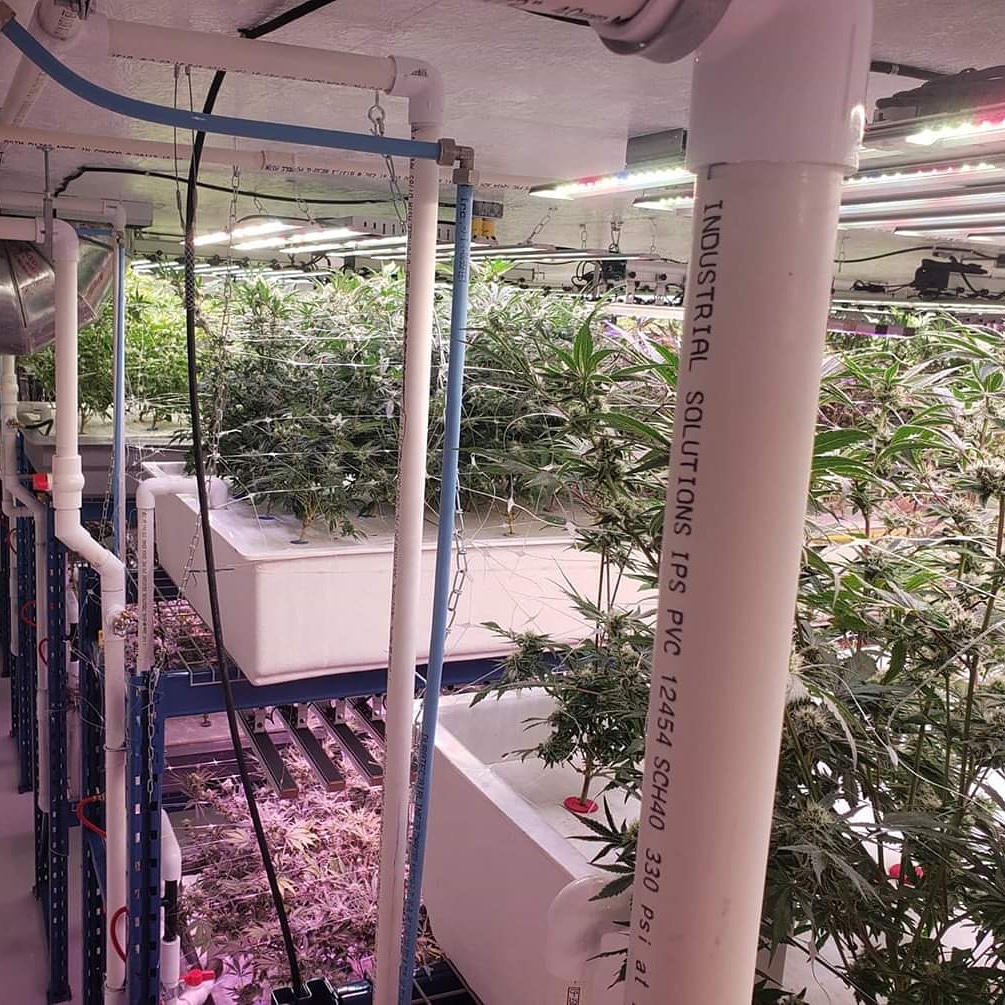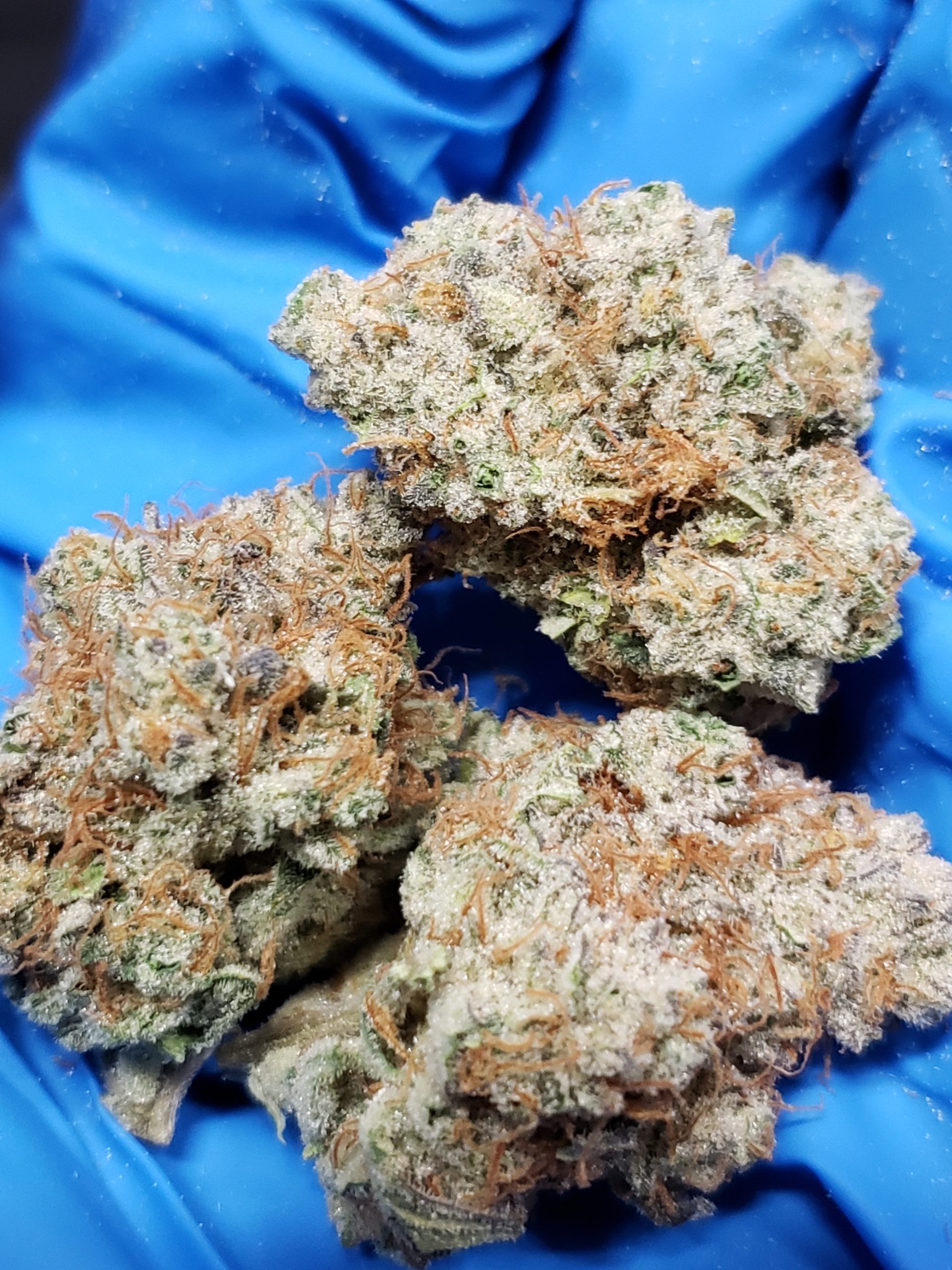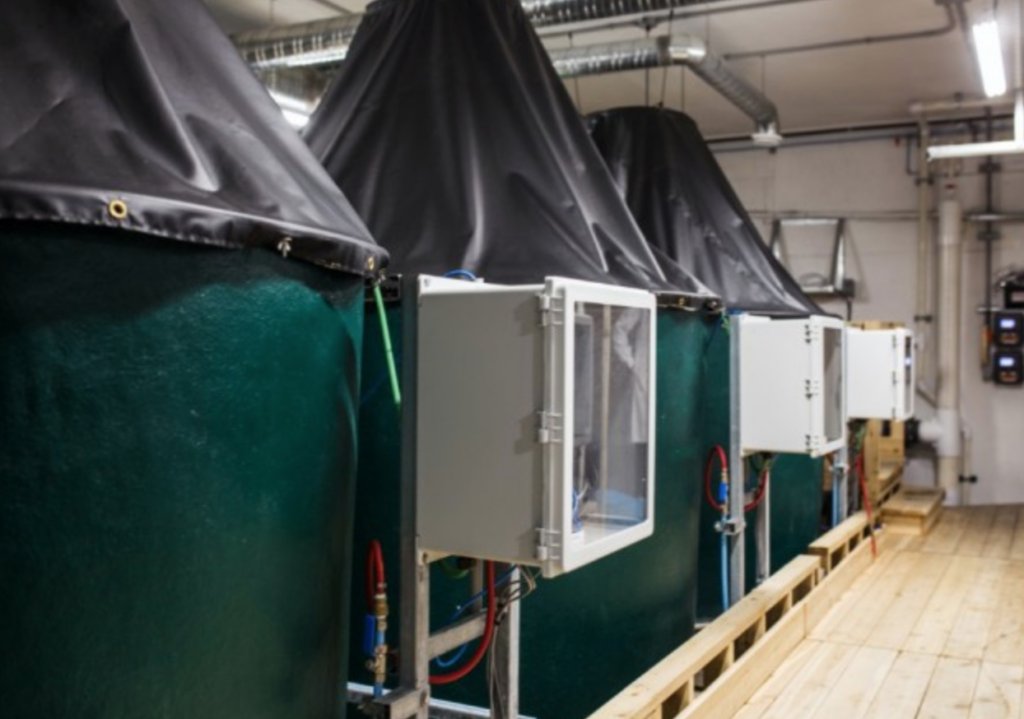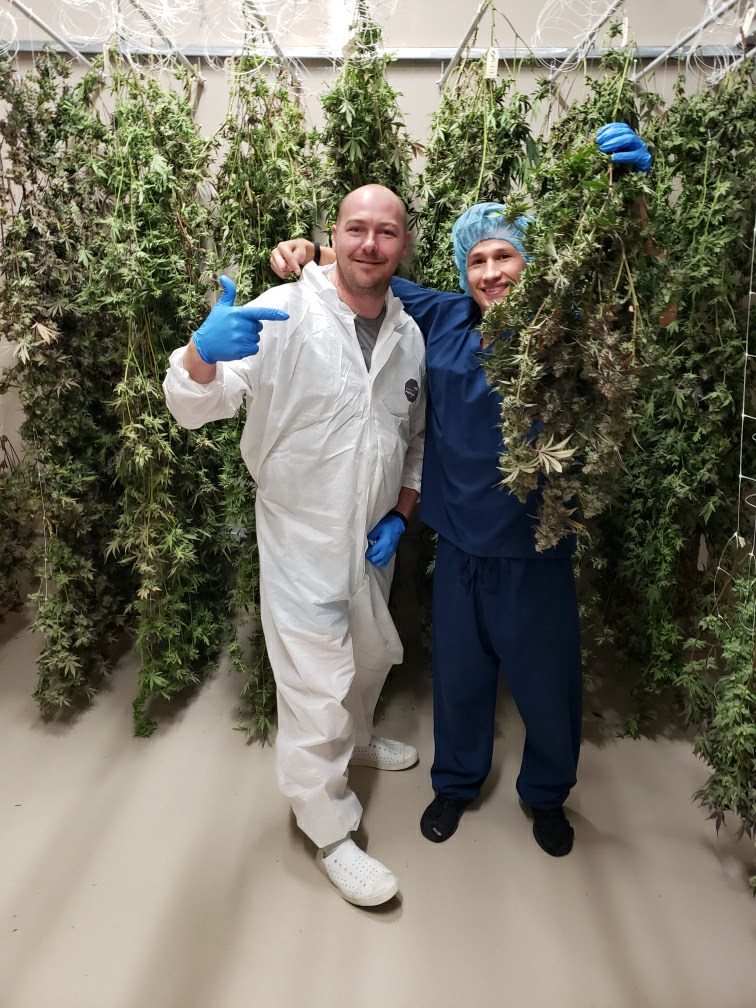
| COMPANY: | Habitat Craft Cannabis Ltd. |
| LICENCE TYPE: | Micro cultivation |
| APPROACH: | Indoor, aquaponics |
| TIMELINE: | ~4 months (May 2019 to September 2019) |
| COST: | ~$2 million |
| FACILITY: | indoor |
Rudi Schiebel and Laine Keyes created Habitat Craft Cannabis in 2017 in Chase, BC when the longtime friends began looking at ways to combine their long time passion for cannabis with their interest in sustainable agriculture, into a fully legal cannabis market.
SUSTAINABLE, SMALL SCALE APPROACH
The partners had been growing cannabis for themselves and others under the MMAR since 2010, as well as running a large 600 acre bison ranch. Originally they had applied in 2017 for a standard licence to produce cannabis under the then ACMPR medical cannabis regulations, but when the micro cultivation and processing licences were unveiled they decided it was a better fit for their more sustainable, small scale approach.
The CEO and Co-founder, Schiebel says he and Keyes saw the opportunities presented by the passage of the Cannabis Act in 2018 as a way to combine their passion for cannabis and for innovative, sustainable agriculture.
AQUAPONIC SYSTEM RAISING COHO
Habitat’s small indoor facility, a retrofit of the same building that once housed their MMAR operations, is home to about 1,000ft2 of flowering space for their cannabis, which is fertilized by a certified organic aquaponic system raising coho salmon in large tanks.
Schiebel says that while Habitat’s long term goal is to both scale up their production, as well as build the foundation for similar turnkey operations of their facility at other locations around Canada, they chose to start small, utilizing only about half of a micro cultivator’s allotted 2,150ft2 as they refine their system.
Our goal is to get to about 10,000ft2 growing slowly and organically, and having a sixty to one hundred ton salmon system.
Although his partner, Keyes, a second generation cannabis grower, was able to migrate in around 185 different cultivars when they were licensed, Schiebel says Habitat’s currently limited space, as well as their slow and deliberate approach to their work, has them focussing currently on two, their Cake and Caviar varieties.
“Our goal is to get to about 10,000ft2 growing slowly and organically, and having a sixty to one hundred ton salmon system. That’s our main goal, but still maintaining the quality and the small batch, small room program. So when we start going down that road is when we will tap in more to all the genetics we have.”
THIRD PARTY PACKAGING
In the meantime, they are busy harvesting their coho salmon, as well as getting ready to harvest their second crop of cannabis. Their first cannabis harvest, around 30kg, is expected to reach consumers in some provinces by the end of April through their partner, Shelter Brands. Shelter is a third party processor who is focussing on assisting micro cultivators in getting their product to market. Shelter Marketplace also runs an online platform for medical patients and has just launched Habitat’s Cake strain in 3.5g containers.
There’s always growing pains when doing a deal like that, but we have a good relationship (with Shelter), so we can all help problem-solve the issues that come up when dealing with a heavily regulated market.
Although they hope to eventually get their own processing licence, Schiebel says he’s been happy with their partnership with Shelter thus far. Despite relying on Shelter for packaging as well as sales to provinces and retailers, Habitat has been able to maintain their own brand on the products on store shelves.
“What we did with Shelter was third party packaging, but all of our products will go out under the Habitat brand. So we’re still very much involved in the distribution and how our brand is represented. We have full control over that.”
“There’s always growing pains when doing a deal like that, but we have a good relationship (with Shelter), so we can all help problem-solve the issues that come up when dealing with a heavily regulated market. So it’s been good so far.”
SOLVENTLESS EXTRACTS
Although their main focus right now is on top quality flower and pre-rolls, Schiebel says Habitat also has a passion for solventless extracts like bubble hash and rosin. They hope to have those products on the shelves eventually, as well.
Originally, Habitat had intended to operate their first building for about 18-24 months, but with delays in new construction due to the COVID-19 crisis, it continues to be the company’s main operating facility.
CRAFT INTEGRITY OF PRODUCT & BRAND
As they do eventually scale up, even to a standard cultivation and processing licence, Schiebel says it’s important to him and his team to do so in a way that will maintain the small scale, craft integrity of their product and brand. For him, he thinks that will eventually be at a standard cultivation and processing facility of around 10,000-30,000ft2.
“We’re very cognizant that we don’t want to be a massive size here, because of the ability to maintain the small batch appeal. But we’ll keep growing while maintaining our ability to keep the high quality that we want and expect. We think that’s somewhere between 10,000-30,000ft2 of canopy space in multiple rooms tapping at around 2,000ft2 for each room.”
AQUAPONIC TECHNOLOGY
Over time, he says, they hope they can use this as a proof of concept for similar facilities utilizing their system not just in Canada, but all over North America, and the world.
We want to really build out our aquaponic technology and get that to about 100 ton a year of salmon. That will let us really show the scalability for our technology so we can be able to offer that as a turnkey solution for both protein and not just cannabis…
“We want to really build out our aquaponic technology and get that to about 100 ton a year of salmon. That will let us really show the scalability for our technology so we can be able to offer that as a turnkey solution for both protein and not just cannabis, for horticulture in general. For us, we want to build our farm up and build enough production that we’re able to have a very strong regional brand.”
FARM-GATE & DIRECT RETAIL
Since Habitat is located adjacent to Schiebel and Lane’s sustainable Turtle Valley Bison Ranch which often gets visitors, especially in the summer tourist season, he says he would also love to see their farm be able to sell cannabis directly with an eventual federal sales licence and approval from the province.
With the economy even more stressed at the moment, one of the things that would really help cannabis companies is if we could do our own distribution and retail right here.”
“We’re definitely interested in that. We are in the Shuswap region and people want to tour the area because of the bison farm, so it’s easy enough for us to do farm-gate, too.”
In addition to farm-gate, he says he thinks the province has an interest in allowing farms like his to bypass the provincial distributor and sell directly to retailers. This, he says, will be a key in making smaller micro cultivators like Habitat to be financially sustainable.
“Directly being able to deliver to the regional retail stores in the area, we can build the relationships through local stores to push our product which I think will be the most beneficial for market access for micro cultivators such as ourselves. With the economy even more stressed at the moment, one of the things that would really help cannabis companies is if we could do our own distribution and retail right here.”
Schiebel says the Province has been in touch with his team, and that he has been impressed by their commitment to understanding the needs of producers like himself.
They definitely seem to be taking an economic development approach to cannabis here (in BC) and helping to create market access.
“They’ve done a good job of calling us and asking questions to see if it would be beneficial for us. They definitely seem to be taking an economic development approach to cannabis here and helping to create market access. It may still be some work convincing the public safety side of things, but the people we have spoken with (from the Province) seem eager to make those changes.”
FINANCIAL FEASIBILITY
Schiebel says their own farm is on the high end of costs for a typical micro, at around $2 million to retrofit their existing building, plus the investment into the R&D for their certified organic aquaponic system. He emphasizes that not everyone necessarily needs to build to that level of complexity and that the cost includes Habitat’s extensive efforts to build a top-of-the-line aquaponic system, as well. Nonetheless, he feels confident the company’s model is financially feasible, especially with the level of quality they are able to produce.
I think people are willing to pay a little more for a legal product, but the quality needs to be there.
Ultimately, he says gaining a processing licence will also be a big help, but the main focus for micros should be on getting around $4-5 a gram wholesale.
“One of the biggest expenses we run into is the packaging component of it, having to ship out to do that, plus the excise tax. By the time you get it out there you end up being in that $14-16 a gram range and that’s making probably about $5 a gram (wholesale).
“So I think you want to shoot around that because you’re smaller and don’t have the economies of scale of the larger producers. So if you can sell around $5 a gram and it’s high quality, you can get around $15-16 a gram retail.
“There’s an investment to get there, but it can also help you bring that shelf price down so we can get it closer to what a lot in the legacy market are used to paying. I think people are willing to pay a little more for a legal product, but the quality needs to be there.”
“One of the biggest expenses we run into is the packaging component of it, having to ship out to do that, plus the excise tax. By the time you get it out there you end up being in that $14-16 a gram range and that’s making probably about $5 a gram (wholesale).
















